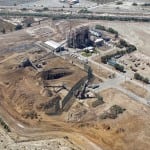Congress snubbed the biomass power industry in 2004 when open-loop biomass power plants were given only half the production tax credits (PTCs) received by other renewable sources, such as wind, solar, and geothermal. It further dissed open-loop biomass plants by authorizing the credit for only five years (it expired December 31, 2009) rather than the 10 years given to other renewables. Why is the biomass power industry not getting the policy respect and equity with other renewable technologies that it deserves?
Biomass Plants Don’t All Get Equal Treatment
There are two types of biomass plants. Closed-loop plants are those burning organic material from vegetation planted exclusively for use as a power generation fuel stock. Open-loop plants (the vast majority) use a variety of agricultural-, forest product –, and construction-related wastes for fuel. Current renewable PTC rules have seated open-loop biomass power generation in the caboose of the PTC gravy train.
Not only were these biomass combustion technology plants singled out for rough treatment, but there also appears to be little momentum in Congress to right the wrong. Time is of the essence, as the PTC for open-loop biomass-fueled power plants placed in service prior to August 8, 2005, expired at the end of last year.
The loss of the PTC is a body blow to the entire biomass industry, as a strong majority of the biomass plants in the U.S. entered commercial service prior to 2005. In California, the number approaches 90%. I’m at a loss to explain why policy makers have relegated these proven power plants to second-class status and perhaps delivered a death sentence to this part of the biomass industry.
Biomass Gets No Respect
The amount of biomass power of all types consumed in the U.S. exceeded that of solar, wind, and geothermal plants combined in 2007. However, as these more familiar renewable technologies grew, biomass generation growth has been stagnant for a decade. This reversal of fortune for mainly open-loop biomass generation certainly appears to be a result of reduced PTC support.
The Energy Information Administration reports that biomass-fired power plants supply about 2% of the energy consumed in the U.S. and estimates that, under the right set of policies, biomass could produce 15% of our nation’s electricity needs by 2030. Given the congressional snub of open-loop biomass power, this assessment should be considered very optimistic.
In addition to an explanation of the five-year-shorter effective period of the PTC, inquiring minds would like to understand why the PTC for open-loop biomass was half the value of the PTC for its renewable energy cousins in the first place. According to the Biomass Power Association (BPA), wind power, solar, geothermal, and closed-loop bio-energy projects currently receive 2.1 cents per kWh, while open-loop plants received only 1 cent per kWh. (Even the next generation of new nuclear projects is set to receive a PTC of 1.8 cents per kWh.) That 1.1 cent per kWh difference over the past five years placed many biomass plants on economic life-support. Now, the loss of even the 1 cent per kWh PTC is the difference between continuing operation and pulling the plug on an otherwise well-operating and very valuable power station.
We should not be surprised to learn that many carbon-neutral biomass-fired power plants may cease operation in the coming years due to loss of the PTC. In California, development of biomass energy resources is an essential part of Governor Schwarzenegger’s Executive Order S-06-06, which requires producing 20% of California’s electricity needs from biomass by 2010.
According to a 2007 assessment of biomass resources in the Golden State, agricultural and forestry waste have the potential to provide as much as 2,800 MW of the projected statewide peak power capacity needs. With the expiration of the biomass PTC, Schwarzenegger will be forced to revise his state’s energy production plans. California Energy Commission (CEC) data show that 95% of the state’s biomass-fired plants were constructed prior to August 8, 2005, and — having lost their PTC — are now in serious financial jeopardy. Already, electricity generated in California from biomass has slid from 6,192 MW in 2002 to 5,724 MW in 2008, according to the CEC (the last year for which data are available), given the dicey operating economics experienced by these valuable plants. Expect a number of open-loop biomass project closures in 2010 and poorer operating results for those that remain in operation as owners reduce operation and maintenance expenditures.
Little Hope Remains
Rep. Stephanie Herseth Sandlin (D-S.D.) introduced HR 4373, the Renewable Biomass Fairness Act, on December 16 of last year. Among other provisions, it would add the lost five years to the PTC for biomass plants, plus rate parity. To date, only Rep. Wally Herger (R-Calif.) has signed on as a cosponsor of the legislation. That same day, the legislation was referred to the House Committee on Way and Means. I could not find a record of a parallel bill introduced in the Senate.
In my view, PTC policy must be consistently and evenly applied to all renewable energy projects to ensure that legislation does not discriminate between technologies. Today, U.S. renewable policy provides a generous PTC handout to wind, solar, and other renewable power sources, but biomass combustion was backhanded on the last day of 2009 with the loss of its PTC. Instead, Congress should reach out to the biomass combustion industry and guarantee PTC equity for all renewable technologies.
—Dr. Robert Peltier, PE, is POWER’s editor-in-chief.










